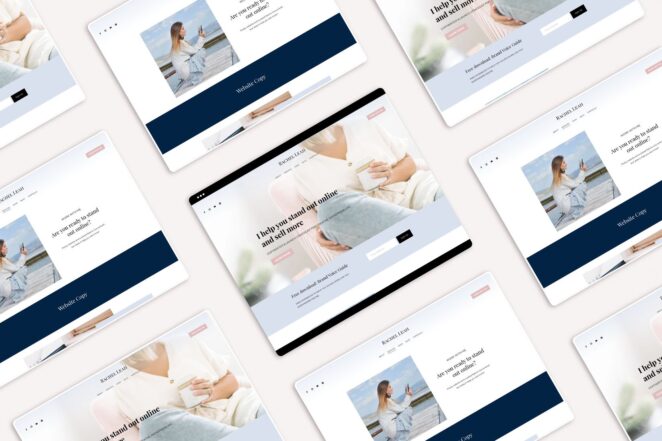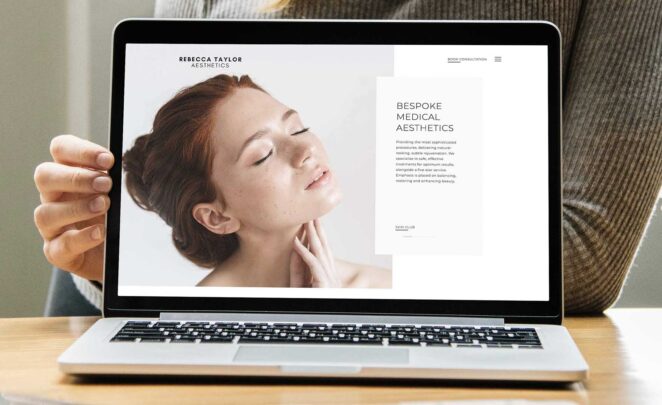Did you know that around 41% of homebuyers start their hunt for their dream house with an internet search? This shows the importance of having an attractive and easy-to-use website. It is an effective way to show off a property, get in touch with potential buyers, and advertise a real estate agent’s services. Fortunately, you don’t have to start from scratch when it comes to designing a website.
There are many simple yet effective property website templates available online (like here) that are easily customizable to your specific needs. It’s not difficult to get started with a pre-designed site (let’s call it that), so I advise you not to miss out on taking advantage of templates for your real estate business.
Why Do You Need It?
Using such a ready-made web design, I was able to launch a user-friendly site that has already begun bringing in interested parties. This enabled me to advance in my real estate career. Specifically, it helped me:
- create an effective online presence;
- get noticed by potential homebuyers;
- establish my credibility as a real estate professional.
Using a property web template, I was able to quickly build a website that looked professional and showed off the properties I was selling. It also let me tell people in detail about my services and the listings I had for sale. My website started to stand out from the competition, and as a result, I was able to gain more exposure, connect with more potential clients, and make more sales. This, in turn, helped me achieve success in my real career.
Most importantly, I was able to spend less time and energy on the site’s design because of the resources saved by using templates. After all, why bother reinventing the wheel when you can just copy and paste it?
Features of Templates That Help My Site Stand Out

Real estate brokers may benefit greatly from the many features included in property website designs. These features include:
- navigation,
- usability,
- loading speed,
Let’s Start with the Navigation
Having a drop-down menu was extremely beneficial for my website. It allowed me to easily categorize and organize my content, so visitors could quickly find what they were looking for. In particular, it dealt with a lot of information regarding properties, services, and other listings.
Tip: The drop-down menu can also contain sub-menus with more specific information about properties. For example, I had a submenu for each type of property I was marketing, such as apartments, houses, and vacation homes. This allowed visitors to focus on their search and find the apartments they were looking for in a matter of seconds.
Another navigational element of templates is a real estate catalog. It’s useful since it gives me a compiled list of properties homebuyers can purchase or rent. A catalog gives a lot of information about each estate, like its size, location, price, and amenities. This helps people who want to buy or rent an estate make an informed choice. A catalog can also include helpful visuals like floorplans, photos, and virtual tours, which can make it even easier to choose from.
Usability
In today’s mobile-centric digital landscape, a responsive design strategy is essential. This makes websites more accessible and usable for all types of devices. This means that my site can be viewed on a laptop, a tablet, or a smartphone with the same user experience. Additionally, having mobile-friendly webpages helps improve search engine rankings, as Google favors sites that are optimized for mobile devices.
Web forms are another usability-focused component. They are invaluable for my real estate site since they allow potential buyers to easily get in touch with me and ask me questions about available homes and apartments. They can also be used to gather information about customers for marketing purposes. For example, I use forms to sign up potential buyers or renters to mailing lists. This allows me to keep in touch with customers and send them regular updates about available properties.
Loading Speed

There’s no point in stressing the importance of fast-loading pages. One of the factors contributing to the rapid load time is lazy loading. It is an effect that involves loading content only when it is needed. For instance, instead of loading all images on the page at once, only the visible ones are loaded, and then the rest are loaded as the user scrolls down the page.
Also crucial for rapid page loads is the use of validated HTML, CSS, and JavaScript. Poorly written code can cause the page to take longer to load as it becomes more difficult for the browser to interpret it. Valid code also makes it easier to debug any errors or issues that may arise. Additionally, well-structured markup ensures that the site is properly rendered on all types of devices, which is key to a positive user experience.
Tip: Another way to improve page loading speed is to optimize images and other media. I always compress images to reduce their size and host videos on a different server, such as YouTube or Vimeo. Additionally, consider using a content delivery network (CDN). It can help speed up the loading of content by caching it on servers located around the world.
Aesthetics
Retina readiness is a necessity for aesthetics, as it ensures that images are displayed clearly on high-resolution displays. All my images are optimized for Retina displays. This makes them sharper, crisper, and more vibrant compared to their non-Retina counterparts. This allows for a more pleasing visual experience for users, which in turn helps to improve the overall aesthetics.
The parallax effect is another way to add visual interest to a website. It involves the background images moving at a slower speed than the foreground images, creating an illusion of depth and motion. It creates a layered effect, making the website more visually engaging and dynamic.

Wrapping Up
When selecting a template, consider the overall design and layout. Look for a design that is user-friendly and aesthetically pleasing. Also, make sure it is optimized for fast loading times and supports Retina displays. Lastly, check to see if it has any advanced features, like parallax effects or lazy loading.
And don’t forget to check the expiration date on the template! 😉 Just kidding. As far as I know, there is no time restriction on using a theme.




